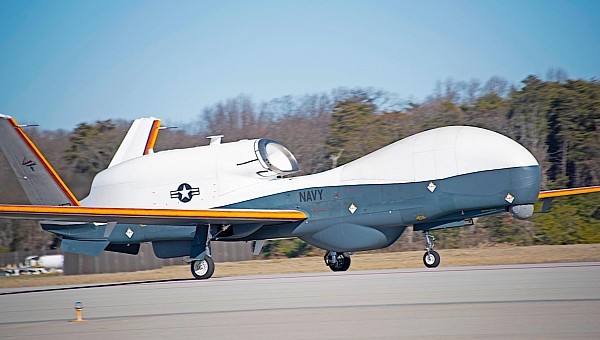Icing is a phenomenon those of us who experience winter months know a thing or two about. In most cases, it's mostly an annoyance, but for aircraft, it could have deadly consequences. And it doesn’t even have to be winter for aircraft icing to occur.
The Federal Aviation Administration (FAA) says that between 2008 and 2016 there were 46 aircraft accidents caused by icing, resulting in 52 deaths. One of the deadliest incidents caused by this occurred in 1994, when an ATR-72 flying as American Eagle Flight 4184 came down at Chicago's O'Hare International Airport, killing 68.
As with most natural phenomena, icing does not affect passenger planes alone. For regular aircraft, there are now ways to prevent it from occurring and the planes from losing lift. But what do you do when you want to make sure a military drone does not crash because of icing?
The MQ-4C Triton is an intelligence, surveillance, reconnaissance and targeting (ISR&T) drone currently being put together by Northrop Grumman. It’s not a fully autonomous machine, and still needs to be controlled for the ground, but that in no way eliminates icing dangers.
That’s why the U.S. Navy, the primary user of the tech, kicked off this week a series of flight tests meant to evaluate the drone’s resistance to wing ice accumulation, and how it performs when such a thing occurs.
The first of about 15 flights planned for this task in 2023 occurred on January 25 at the military’s Patuxent River installation. Since the weather was unwilling to help and provide natural icing conditions, the test team used something artificial.
That would be 3D-printed nylon ice shape blocks installed on the wings. Placed on the test drone last year, they are orange in color (check the main photo of this piece for details) and coated with a layer of coarse grit. This gives the block the texture and roughness of actual ice and has the potential of having the same effect.
With these things on, the drone lifted off and headed to an altitude of 20,000 feet (6,000 meters), where its operators tested the aircraft’s stability and control by telling it to perform various maneuvers.
The test seems to have been a success, as the drone came safely back down, but now the Navy will have to look at the data and really determine how it all went. If everything checks out, future flights will see the MQ-4C Triton stay airborne for up to five hours with those things over its wings.
Five hours is nothing compared to what this drone can do. The official specs point to it being capable of staying in the sky for 24 hours, while traveling at altitudes of up to 10 miles (16 km) and at speeds of up to 357 mph (575 kph).
To be used by both the U.S. Navy and the Royal Australian Air Force (RAAF), the Triton fleet will grow to a total of about 70 units in the coming years.
As with most natural phenomena, icing does not affect passenger planes alone. For regular aircraft, there are now ways to prevent it from occurring and the planes from losing lift. But what do you do when you want to make sure a military drone does not crash because of icing?
The MQ-4C Triton is an intelligence, surveillance, reconnaissance and targeting (ISR&T) drone currently being put together by Northrop Grumman. It’s not a fully autonomous machine, and still needs to be controlled for the ground, but that in no way eliminates icing dangers.
That’s why the U.S. Navy, the primary user of the tech, kicked off this week a series of flight tests meant to evaluate the drone’s resistance to wing ice accumulation, and how it performs when such a thing occurs.
The first of about 15 flights planned for this task in 2023 occurred on January 25 at the military’s Patuxent River installation. Since the weather was unwilling to help and provide natural icing conditions, the test team used something artificial.
That would be 3D-printed nylon ice shape blocks installed on the wings. Placed on the test drone last year, they are orange in color (check the main photo of this piece for details) and coated with a layer of coarse grit. This gives the block the texture and roughness of actual ice and has the potential of having the same effect.
With these things on, the drone lifted off and headed to an altitude of 20,000 feet (6,000 meters), where its operators tested the aircraft’s stability and control by telling it to perform various maneuvers.
The test seems to have been a success, as the drone came safely back down, but now the Navy will have to look at the data and really determine how it all went. If everything checks out, future flights will see the MQ-4C Triton stay airborne for up to five hours with those things over its wings.
Five hours is nothing compared to what this drone can do. The official specs point to it being capable of staying in the sky for 24 hours, while traveling at altitudes of up to 10 miles (16 km) and at speeds of up to 357 mph (575 kph).
To be used by both the U.S. Navy and the Royal Australian Air Force (RAAF), the Triton fleet will grow to a total of about 70 units in the coming years.








